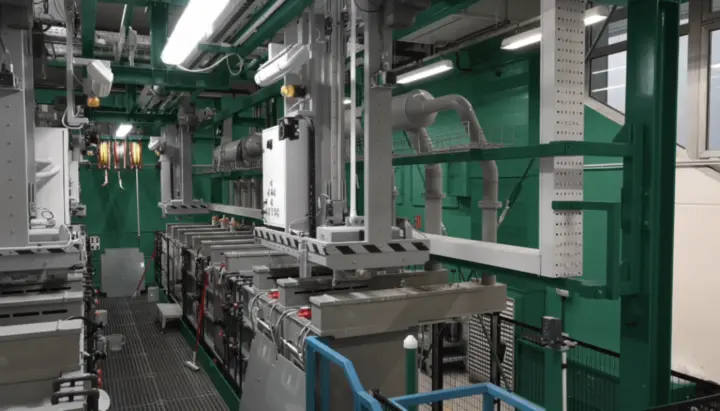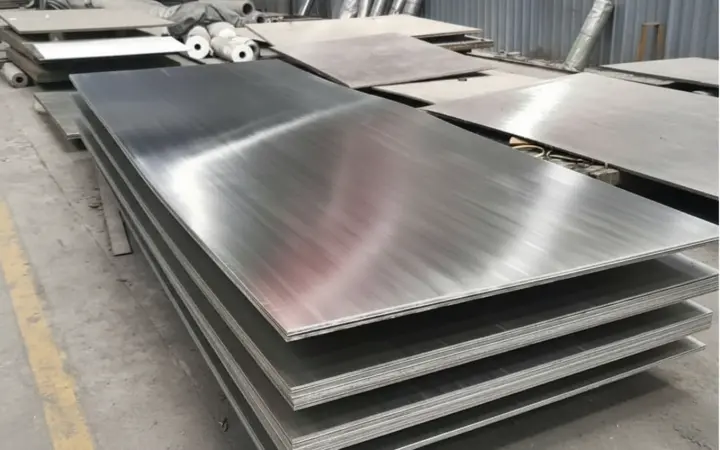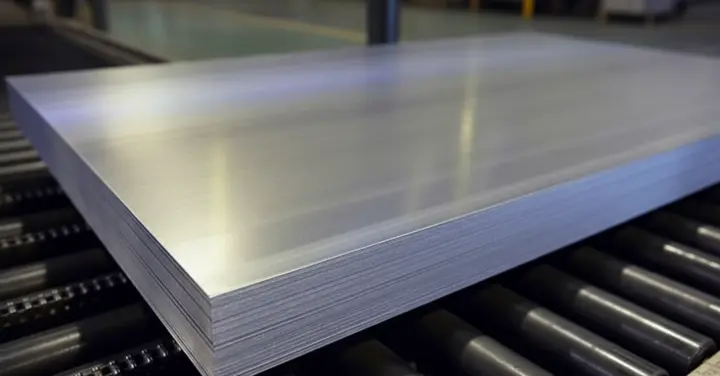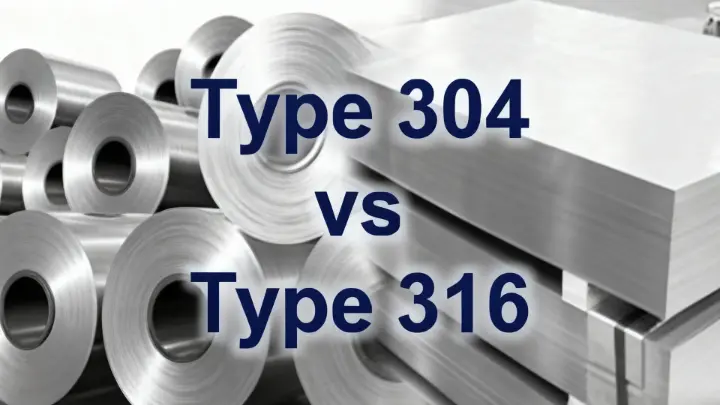about 1100 words · 6 min read
By Nikka Industrial Limited · Oct. 19, 2025
When selecting hardware fittings for your product line, choosing the right material is a critical step in the decision-making process. Among the many options, austenitic stainless steels stand out for their exceptional strength, durability, and aesthetic appeal, with 304 and 316 being the two most popular grades. While they may be difficult to distinguish by appearance, their internal chemical compositions and properties differ significantly, directly impacting the lifespan and performance of the fittings in specific applications. This in-depth guide will break down the 7 key differences between 304 and 316 stainless steel and provide clear application recommendations, ensuring you make the most cost-effective and performance-guaranteed choice for your brand and project.

Table of Contents
1. Grade 304 Stainless Steel: The Industry Standard
2. Grade 316 Stainless Steel: Superior Corrosion Resistance
3. The 7 Key Differences Between 304 and 316 Stainless Steel
- Difference in Chemical Composition
- Difference in Mechanical Properties
- Difference in Corrosion Resistance
- Difference in Temperature Resistance
- Durability
- Weldability and Formability
- The Price Difference Between SS304 and SS316
4. Common Applications of Stainless Steel 304 and 316
5. Which is Better for Your Application: SS304 or SS316?
6. Frequently Asked Questions (Q&A)
Grade 304 Stainless Steel: The Industry Standard
Grade 304 stainless steel, also known as 18/8 stainless steel (due to its composition of approximately 18% chromium and 8% nickel), is the most widely used stainless steel grade. It possesses an excellent combination of properties, including good corrosion resistance and outstanding formability and weldability. For most indoor environments and non-corrosive or mildly corrosive outdoor settings, SS304 offers a reliable and highly cost-effective solution, making it the ideal choice for hardware like kitchen utensils, indoor railings, and decorative panels.

Grade 316 Stainless Steel: Superior Corrosion Resistance
Grade 316 stainless steel builds upon the foundation of 304 by adding a key element: molybdenum, typically in a concentration of 2-3%. This addition drastically enhances its corrosion resistance, especially against chlorides (such as salt, seawater, and de-icing agents) and various industrial chemicals. Consequently, 316 stainless steel is often referred to as "marine-grade" stainless steel and is the premier choice for harsh environments such as coastal architecture, marine hardware, medical instruments, and chemical processing plants.

The 7 Key Differences Between 304 and 316 Stainless Steel
Understanding the following seven differences is central to making the right procurement decision.

1. Difference in Chemical Composition: Molybdenum (Mo) is Key
This is the most fundamental difference between the two. The added molybdenum in 316 stainless steel significantly improves its resistance to pitting and crevice corrosion, particularly in chloride-rich environments.
| Element | 304 Stainless Steel (SS304) | 316 Stainless Steel (SS316) | Primary Impact |
|---|---|---|---|
| Chromium (Cr) | 18.0% - 20.0% | 16.0% - 18.0% | Forms a passive layer, providing basic corrosion resistance |
| Nickel (Ni) | 8.0% - 10.5% | 10.0% - 14.0% | Enhances formability, ductility, and high-temperature strength |
| Molybdenum (Mo) | - | 2.0% - 3.0% | Significantly enhances resistance to chlorides |
| Carbon (C) | ≤ 0.08% | ≤ 0.08% | Affects strength and intergranular corrosion |
2. Difference in Mechanical Properties
At room temperature, the mechanical properties of 304 and 316 stainless steel (such as tensile strength and yield strength) are very similar, with negligible differences. Therefore, mechanical strength is not typically a primary consideration when choosing between them, except in specific high-temperature applications where 316 maintains better strength.
3. Difference in Corrosion Resistance: The Chloride Challenge
This is the biggest differentiator in practical application. In everyday freshwater or non-saline environments, 304 performs well. However, when exposed to salt spray (coastal areas), seawater, de-icing salts, or chlorine-based cleaners, the surface of 304 stainless steel will exhibit pitting or rust spots much faster. In these scenarios, the molybdenum in 316 stainless steel gives it far superior resistance.
4. Difference in Temperature Resistance
Grade 316 stainless steel has better resistance to high temperatures than 304. The recommended maximum temperature for intermittent service for 304 is approximately 870°C, while for continuous service, it's advised to stay outside the 425-860°C range to avoid carbide precipitation. In contrast, 316 can be used intermittently up to 925°C and exhibits better high-temperature creep strength.
5. Durability
Both grades are extremely durable when used in the correct environment. However, "durability" is directly tied to environmental suitability. Using 304 fittings for an outdoor railing in a coastal area will result in a much shorter lifespan than expected. Using 316 in the same scenario will ensure it remains pristine for decades. Therefore, the durability of 316 in harsh environments is superior.
6. Weldability and Formability
Both 304 and 316 stainless steel exhibit excellent weldability and formability. They can be stamped, drawn, and bent into complex hardware shapes through various manufacturing processes. The difference in this regard is minimal, and both are easily handled by most fabrication techniques.
7. The Price Difference Between SS304 and SS316
Due to the addition of more expensive nickel and molybdenum, the raw material cost of 316 stainless steel is typically 20%-30% higher, or sometimes more, than that of 304. This price difference is a critical factor that brand owners must consider during cost analysis. The key is to balance the upfront procurement cost against the long-term performance and maintenance costs of the product in its target application environment.
Common Applications of Stainless Steel 304 and 316
- SS304 Applications:
- Kitchen Hardware: Sinks, pots, cutlery, cabinet handles
- Indoor Architectural Trim: Stair handrails, doorknobs, decorative panels
- Food Processing Equipment: (Non-saline or non-acidic) tanks, piping
- Automotive Components: Exhaust systems, trim
- SS316 Applications:
- Marine Hardware: Cleats, boat railings, anchor chains
- Coastal Architecture: Outdoor railings, curtain wall fasteners, door/window hardware
- Medical & Pharmaceutical: Surgical instruments, implants, sterile workstations
- Chemical Processing Equipment: Reactors, pipelines, valves
- Swimming Pool Fittings: Handrails, ladders
Which is Better for Your Application: SS304 or SS316?
As a brand owner, the choice of material depends on your assessment of your product's end-use environment:
- Choose SS304 if your hardware will be used primarily in:
- Indoor environments.
- Outdoor environments far from the coast and free from industrial pollution.
- Projects that are highly cost-sensitive where the environment is not corrosive.
- Choose SS316 if your hardware will be used in:
- Coastal regions or anywhere it will be exposed to salt spray.
- Locations where chlorine-based cleaners or disinfectants are frequently used (e.g., hospitals, commercial kitchens).
- Marine environments like boats and yachts.
- Industrial settings requiring resistance to high temperatures or corrosive chemicals.
The Core Decision: Don't sacrifice your brand's reputation and product performance over the next 10+ years to save 20% upfront. Paying the reasonable premium for SS316 in the appropriate application is an investment in your brand's long-term value.
Q&A
A1: A top organic ranking indicates strong brand awareness, but it doesn't mean customers will automatically choose the most suitable product. When a customer searches for "durable door handles" or "rustproof bathroom hardware," if you can offer a premium, corrosion-resistant option based on 316 steel and clearly explain its value, you can capture a more discerning, high-intent customer segment, enhance your brand's professional image, and generate higher profit margins.
A2: You cannot reliably distinguish them by visual inspection. The most dependable methods are to check the material's Mill Test Certificate (MTC) provided by the supplier or to use a professional handheld XRF (X-ray fluorescence) analyzer for testing. Sourcing from reputable suppliers is key to ensuring material grade authenticity.
A3: Yes. Stainless steel is not "rust-proof" but "stain-resistant." In corrosive environments that exceed its tolerance, such as prolonged exposure to salt or chemicals, 304 stainless steel will also develop rust spots.
A4: Grade 316 offers excellent protection, but it's not absolute. For instance, in stagnant, low-oxygen water, even 316 can suffer from crevice corrosion. Furthermore, surface contamination from iron particles (e.g., scratches from regular steel tools) can cause "surface rust," requiring periodic cleaning (rinsing with fresh water) to maintain its optimal performance and appearance.
A5: If the choice must be made between 304 and 316 and the environment is not extremely harsh (e.g., not directly on the coast), one strategy is to use 304 stainless steel but apply an additional protective surface treatment, such as a high-quality powder coating or electrophoretic painting. This provides a physical barrier and delays corrosion, but you must be mindful of maintenance if the coating is breached. However, this is generally considered a compromise, as its long-term durability cannot match the inherent corrosion resistance of 316.









304 vs 316 Stainless Steel: Choosing the Right Grade for Your Project